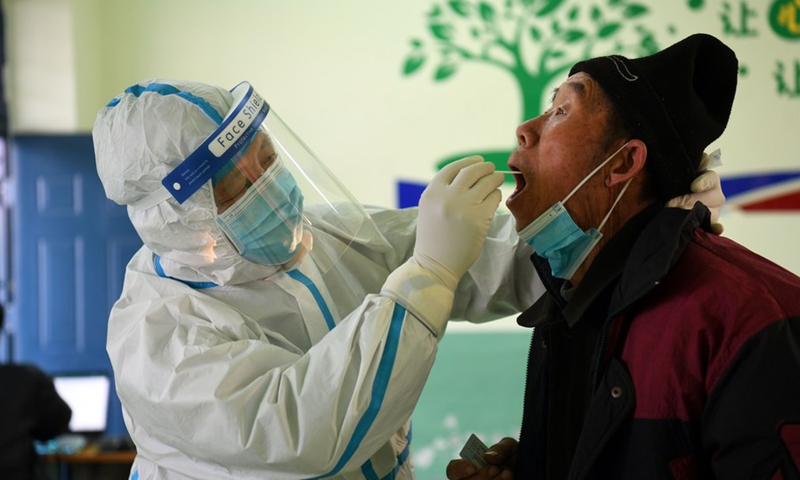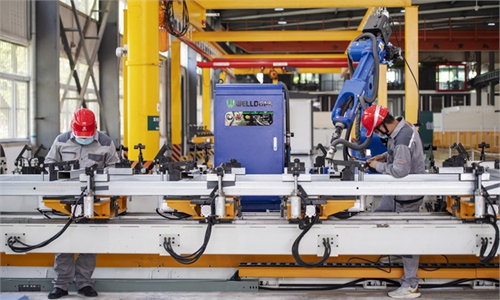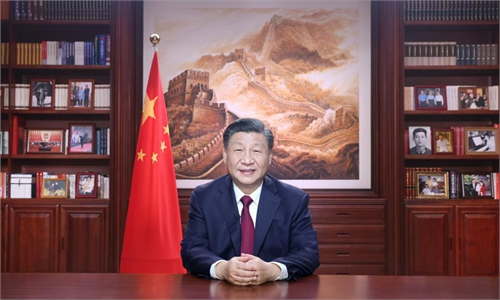COVID response unit calls for adequate medical supplies, smooth transfer of critical cases in rural areas amid holidays

A medical worker collects a swab sample from a resident at a COVID-19 testing site in Baiwangzhuang Village of Jingxing County, Shijiazhuang, capital of north China's Hebei Province, Jan 20, 2021. Photo: Xinhua
The State Council's joint prevention and control mechanism and the central leading group for rural affairs jointly published a work plan on Saturday, specifying to-dos to strengthen the grassroot-level epidemic control system, ensuring supplies of medicines and enhancing protection of vulnerable groups so that rural areas can cope with contagion risks linked to the holiday travel peak.
Meanwhile, villages across China, where medical resources are relatively scarce and less accessible, are gearing up to prepare for the risks as large groups of people are traveling and returning to hometowns amid the "two holidays" - the New Year Day holiday and the Spring Festival holiday.
The Saturday work plan underlined the urgent need to strengthen grassroot-level epidemic prevention and control system. Measures include ensuring village Party organizations play a role, accelerating the setup of fever clinics and training of local medics, coordinating hospitals and small clinics to streamline treatment and transfer processes.
The work plan stated the needs to promote health information among the public, encourage vaccination, advise social distancing, self-health monitoring, and restrict the scale of public gatherings if necessary.
To ensure medical supplies, the work plan advised small and simplified packages for fever and cough pills in addition to expansion of production. County, township hospitals and village clinics should have enough storage of medicines and antigen test kits, particularly in remote places where transportation is less developed.
Prices should be regulated and hoarding must be firmly discouraged and smooth logistics should be ensured, the work plan commented.
To prepare for critical cases, the work plan urged for the preparation of ICUs, ambulances, and training by paring hospitals in cities and ensuring a smooth transfer mechanism is in place.
Key groups, such as the elderly, pregnant and children without guardians, should be given extra care via phone calls, messages or home visits.
The Ministry of Agriculture and Rural Affairs on Friday started to collect useful experience and tips rural localities accumulated throughout epidemic prevention and control.
Different provinces and regions have issued notices guiding the overall COVID response in rural areas and some have already accumulated useful tips.
Liaoning Province in Northeast China have sorted out the high-risk groups and built a hierarchical medical system to smoothen the treatment process. Vaccine vans are being deployed to villages to inoculate people eligible for vaccination.
Medics who retired within the last five years are being employed to make up the shortage at county and township hospitals, while returnees are under health monitoring and given advice to avoid infections, the Liaoning Daily reported.
Qiaoguan township in East China's Shandong Province is distributing free anti-fever medication.
Nujiang in Southwest China's Yunnan organized "backpack teams" into villages, using ethnic languages alongside Putonghua to promote COVID-related knowledge, including how to prevent infections and how to assess one's health situation once infected.
Jiao Yahui, an official from the NHC, said at a Thursday press briefing that the two keys to the rural COVID response are: to ensure medicines can be distributed down to the end-user, meaning in addition to county and township hospitals, the village clinics should have sufficient medicine storage; and to ensure critical cases can be transferred up to hospitals capable of treatment.
A latest assessment by a team from Ruijin Hospital in Shanghai predicted infections in populous urban areas like Beijing, Guangzhou, Shanghai and Southwest China's Chongqing are likely to flatten around over the New Year Day holiday. Analysis based on data from Sichuan, Shaanxi, Gansu and Qinghai provinces suggested infections will peak in mid- to late-January in smaller towns and villages.
Sichuan is one of the earliest places to confront infection peak, and provincial CDC's online survey found more than 63 percent have already tested positive while some untested showed fever and other COVID symptoms.
The Sichuan CDC said the infection peak has passed and it's in a crucial phase to prevent critical cases and deaths, but there is a risk of infections rebounding around the Chinese New Year.
A similar survey by South China's Hainan Province found more than half the local population have been infected, and the villages are about to be hit by a peak in infections. The new round of survey found higher rates of people visited community, county and township clinics than the previous survey conducted between December 12 to18.
Global Times



